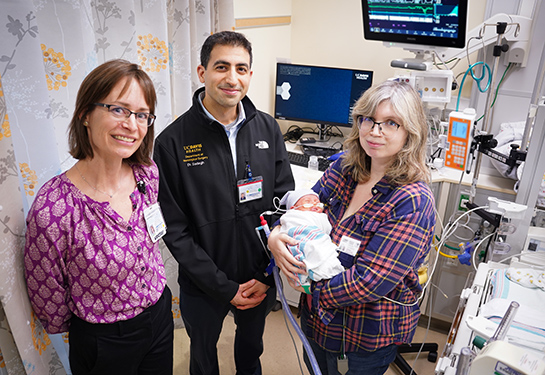Understanding how abdominal aortic aneurysms grow in women
New research indicates these formations develop faster in women and suggests clinical guidelines should be revised.
Abdominal aortic aneurysms can be deadly, but they are often underdiagnosed and, or, undertreated in women. To help address this disparity, researchers at UC Davis Health have harnessed powerful artificial intelligence (AI) software to show how these aneurysms can grow faster in women and may require more rigorous surveillance. The study was published in the Journal of Vascular Surgery.
Abdominal aortic aneurysms happen when a segment of the body’s largest blood vessel becomes enlarged, increasing the risk it could burst and cause catastrophic internal bleeding. To complicate matters, symptoms are generally mild, making the condition difficult to detect. Because abdominal aortic aneurysms are relatively rare in women — partially because they are underdiagnosed — most clinical studies have focused heavily on men.
“There is not a lot of data about aneurysm growth in women,” said Misty Humphries, interim chief of Vascular Surgery at UC Davis Health and senior author on the study. “So, there's not a lot of information about when women’s aneurysms should be fixed or reimaged or even how they grow compared to men’s. This is the first time this data has become available.”
Women have four times greater risk
As a result, existing care guidelines may not fully reflect women’s risk, which can have deadly consequences. Women have four times the risk of their aneurysms rupturing than men, even while under medical surveillance. And when they do rupture, they are more likely to die.
To better understand how aneurysms grow in women, the team harnessed an AI technology called Illuminate. It uses a technique known as natural language processing to analyze electronic health records and medical images, find aneurysms and gauge their growth.
- The authors reviewed images from 488 women and found their aneurysms often grow faster, even when they are relatively small.
- The study showed women are at increased risk when their aneurysms reach 4.5 centimeters.
- By contrast, the clinical guidelines indicate concern when aneurysms reach 5 centimeters.
There's not a lot of information about when women’s aneurysms should be fixed or reimaged or even how they grow compared to men’s. This is the first time this data has become available.—Misty Humphries, interim chief of Vascular Surgery
“The pattern of growth for women is different than it is for men,” Humphries said, “and we need to think about intervening in women at different times than what we're doing now based on the guidelines.”
Humphries says care can be compromised because women’s real-world experiences with aneurysms have not been fully integrated into guidelines. Rigorous image reviews showed that 45% of the women who had aneurysms went completely undiagnosed.
AI and collaboration needed to advance the research
Humphries and her team would like to gather more data to influence these guidelines. However, because abdominal aortic aneurysms are far rarer in women, it can be difficult to put together a large prospective study. AI could provide a powerful tool to reassess scans and identify the unique risks women can face.
“We’d love to collaborate with other institutions to pull all of their data and look at growth patterns over a much larger cohort,” Humphries said. “What we do now is based on size because women's aneurysms change and grow differently. We really need to revamp the guidelines, and it's going to take another study, looking at a larger group of women, to get it done.”





